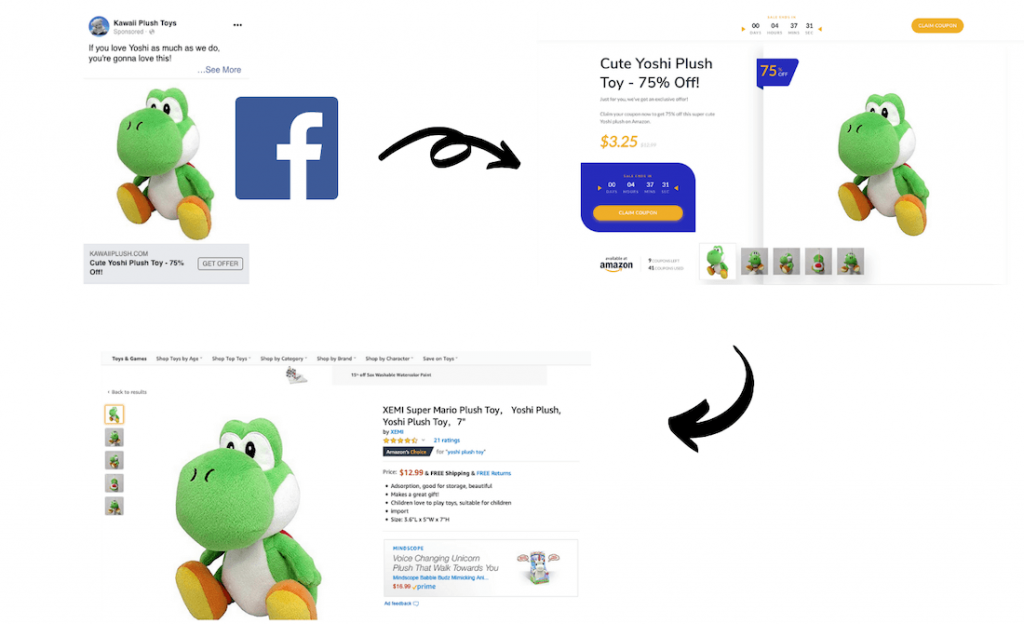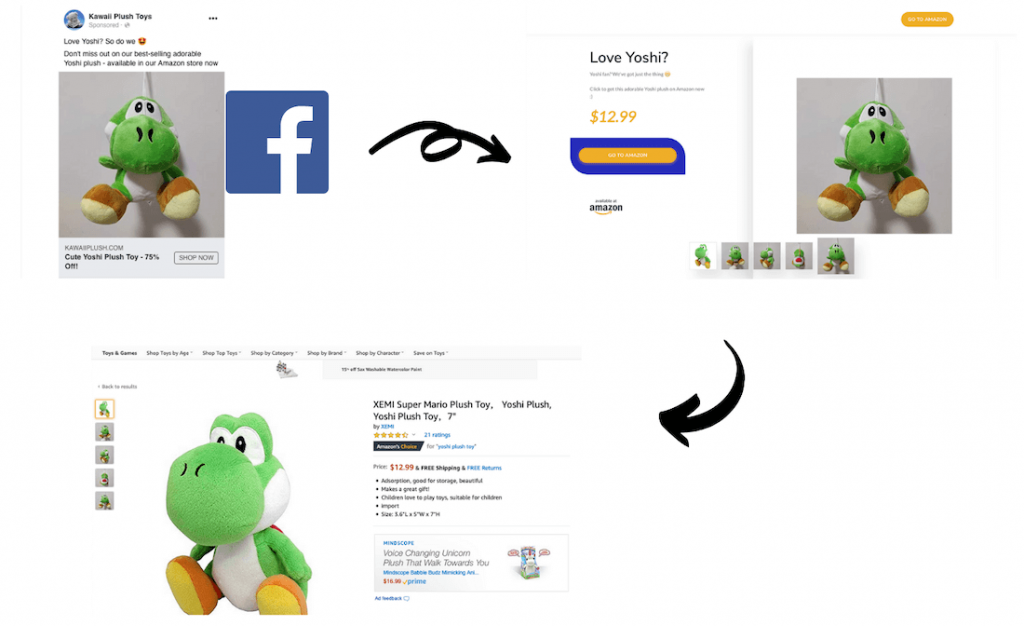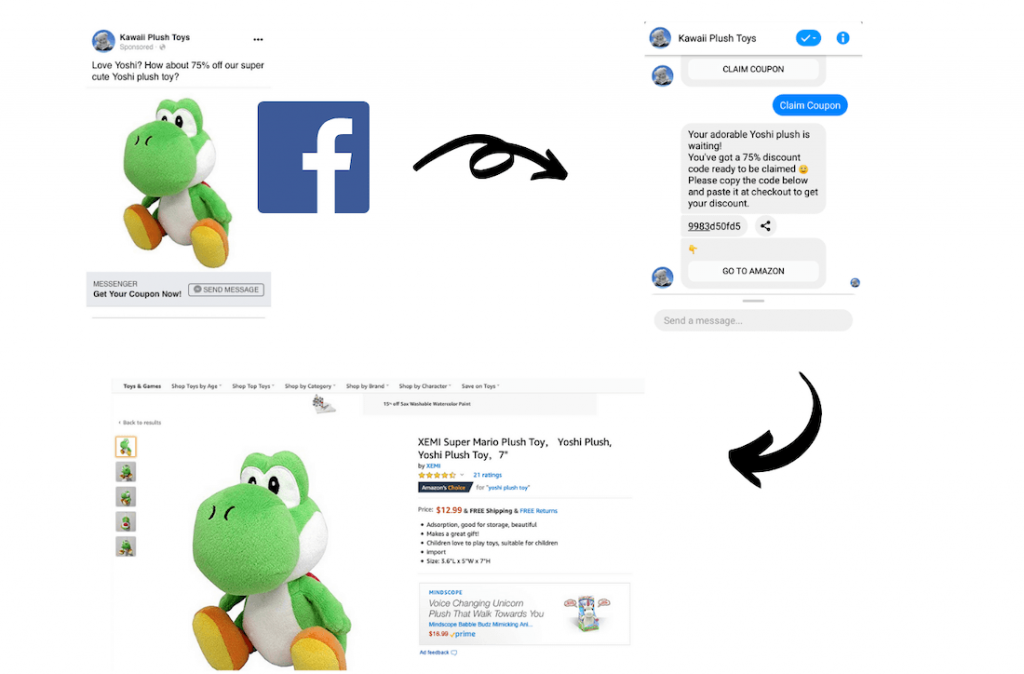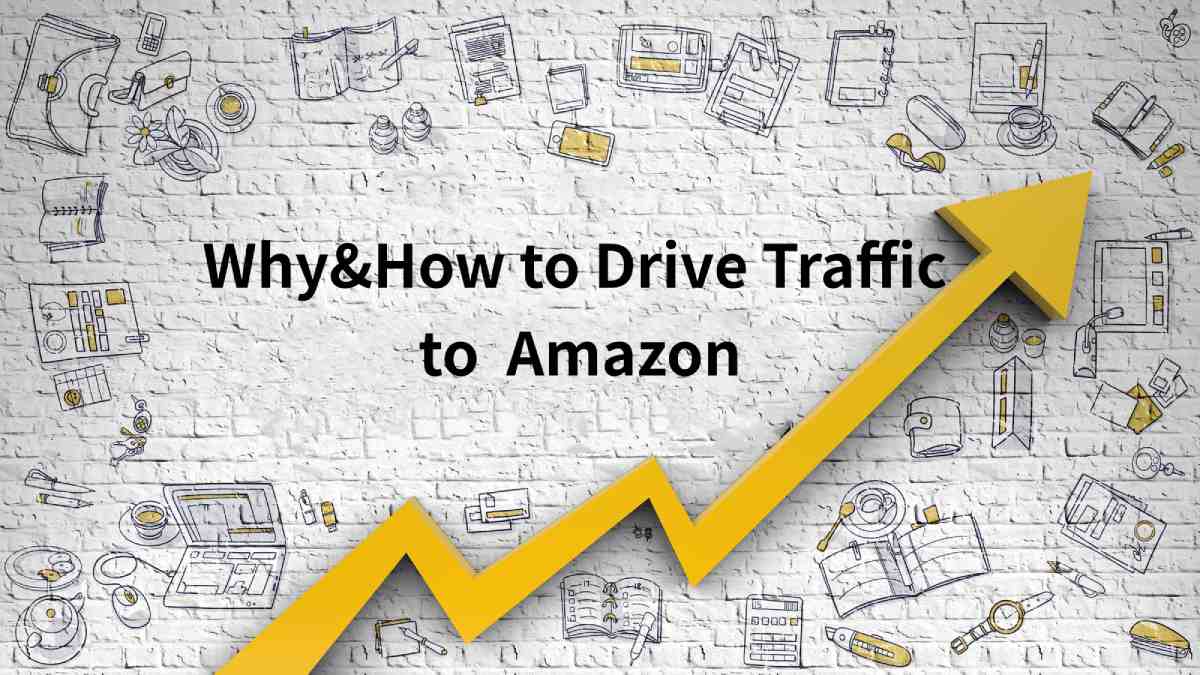When you started selling on Amazon, you probably got in thinking about Amazon in the good old days.
When you’d source products, throw them up on Amazon, optimize your listing, maybe run some PPC ads and get organic traffic.
Contrary to popular belief, Amazon FBA isn’t dead, but this version of it is. Today, most categories are too competitive to optimize for Amazon alone and make a killing. You need to cast a wider net to promote your products.
The way you do this, and get an edge over your competition, is with external traffic. We’re going to explain what this is, why you need it, and how to start driving external traffic, in this post.
What is External Traffic?
First, let’s introduce the term “external traffic”.
We can use this term for any customers you make contact with outside of Amazon, before sending them to your Amazon listing.
It’s the inverse of “organic” traffic – people who come to your listing by finding it in Amazon search.
Some common external traffic channels would be Facebook, Google, Pinterest, email, blogs or your own website. Basically, anywhere that is not Amazon.
Some of these channels may involve paid ads (Facebook Ads & Google Ads for example), others may be passive/free traffic (Google SEO, organic social media posts).
Either way, external traffic has some big differences and advantages over organic traffic, as well as needing a different approach. This is what we’re going to look at below.
Why Drive External Traffic Anyway?
According to SimilarWeb, Amazon.com is the 9th biggest website in the world, the 4th biggest in the US, and the biggest e-commerce marketplace site in the world.
They had nearly 2.8 billion (with a “B”) site visits in December 2019. So why would they need you to send extra visitors their way?
Another sales channel
In the US, 46.7% of online shoppers started their product search on Amazon. That’s a huge number.
But it also means that 53.3% of shoppers started somewhere else, and that’s a revenue stream you may be missing out on.
The increased competition on Amazon means that organic sales may not be enough to grow your business.
Adding a stream of sales from outside of Amazon could be enough to top up your sales to where they need to be.
Inbound vs outbound marketing
In addition to the shoppers who might be shopping in places other than Amazon, you also have potential customers who aren’t actively looking for something to buy at all.
This is something you can capitalize on external traffic to boost your sales.
When people think about buying something online, they usually go to Amazon. Optimizing your Amazon listing is therefore inbound marketing. You’re optimizing to draw in someone who is already looking for something like what you’re selling.
The other type of marketing (which a lot of Amazon sellers aren’t doing by the way) is outbound marketing.
That means going out proactively to find people for whom your product is a good fit, and convincing them to buy.
A good business will often cover both inbound and outbound marketing, to maximize their sales potential. And you can do this with external traffic.
External traffic boosts your rankings
Sending traffic to Amazon can also improve your organic traffic. How? Higher rankings.
One of the biggest ranking factors in the Amazon search algorithm is sales velocity. You sell more, Amazon’s going to rank you higher.
Driving more sales from additional channels helps you achieve this.
On top of this, it’s a widely believed theory that Amazon loves external traffic, and gives you more ranking power for sales coming from external traffic.
Some sellers say that Amazon even weighs external traffic 3x as much as organic sales.
While no one knows for sure how the search and ranking algorithm works, it makes perfect sense.
When you drive traffic to Amazon, you’re basically doing free advertising for them. So why wouldn’t they encourage sellers to do this?
Build an audience
One of the scariest things about selling on Amazon is the lack of control you have over your business.
It’s great to have Amazon’s huge customer base to sell to, but it can be cut off at any moment.
And without control over your customers (as Amazon doesn’t let you gather any kind of contact details), you’ll be in big trouble if your listing no longer ranks.
Capturing customers from outside Amazon, however, lets you build a customer list and take back a level of control and safety.
While Amazon’s terms forbid you from capturing contact details from your Amazon customers, if you do so before they reach Amazon, you’re in the clear.
Having a customer list, in the form of an email list or ManyChat audience, is a huge plus for any Amazon business.
It gives you a safety net should anything go wrong on Amazon, letting you pick up the pieces and launch on your own site, or another marketplace such as eBay or Walmart.
You can also use this list to launch new products and drive more sales to Amazon, giving you a big competitive advantage over other sellers.
Read also: How to Build a Powerful Audience with Facebook Ads
How to Drive Traffic to Amazon
We’ve covered the “what” and the “why”. Now, the “how”. External traffic, particularly paid ads, can be a money-sink if you have no idea what you’re doing.
Here are a few tips to ensure you make the most of your external traffic campaigns.
Pick the right channel
There are a lot of places you can drive external traffic from. Picking the right one(s) is important.
If you choose the wrong channel to focus your efforts, best case scenario you’ll have spent a lot of time for no return. Worst case, you’ll waste a lot of money in ad spend.
You can also choose too many channels to focus on, which will end up in your efforts spread too thin, and most likely poor results.
What makes a channel wrong or right? One thing is the audience. The type of people on whatever channel you’re targeting should be the same as your product’s target audience.
As an example, marketing products suited for retirees wouldn’t make sense on Instagram, which has a demographic mostly under 30.
Additionally, you’ll want to make sure there’s a big-enough audience to make it worth your while.
An email list is a great way to drive traffic, but if your email list only has 9 people, it’s not really going to do much for you.
For most Amazon stores, the best source of traffic is Facebook Ads. They have a huge user base, inclusive of almost all demographics (even 46% of people aged 65+ use Facebook).
Their targeting tools allow you to craft really powerful ad campaigns, and their ad placements are perfectly suited for outbound marketing that complements your Amazon ad strategy.
Filter your traffic (landing page or messenger)
One of the biggest mistakes people make with external traffic is they run ads that go straight to Amazon. A better idea is to send people to a landing page or Facebook Messenger bot sequence first.
The big difference between people on and off Amazon is buyer intent. If someone is on Amazon, they’re looking to buy, right here right now.
Someone surfing Facebook or Google or checking their email? Not so much.
If you send a lot of people with low buyer intent right to your listing, a lot of them will bounce, and your conversion rate (sales/product page views) will tank.
If your conversion rate tanks, so will your rankings.
That’s why you HAVE to filter your traffic. A landing page or Messenger bot works by qualifying the buyer intent of people who click on your ads, and only people who are serious about buying go through to your product listing.
In addition to the conversion rate issue, sending traffic without an intermediate step means you lose your chance to collect contact details like email addresses, or retargeting data with the Facebook Pixel or Google Analytics.
Assets like emails and Pixel data are nearly as important as a sale itself, so you’re missing out big time if you don’t collect anything like this.
Test & iterate
The final piece of advice for external traffic campaigns is to test. Then test, and test, and test again.
You’re never going to come up with the perfect campaign on the first try. Usually, when you start out with external traffic campaigns like Facebook Ads, the cost per conversion or lead will be quite expensive.
That’s because it takes time to hone in on the perfect audience, and craft the perfect message to that audience.
When you test, test a single variable at a time. For example, run two ads that are identical except for the audience. Or two ads with the same audience, but different ad copy.
After running a test like this, find a winner, turn off the loser, and run another test.
Keep iterating this process until you have everything – your ad copy, ad creative and targeting – down to a science.
Sales Funnels for External Traffic
Time to show some examples of external traffic sales funnels in action.
For our funnels we’ll be using Facebook Ads – which we already touched on as the best source of external traffic for Amazon sellers – and LandingCube, a software tool that generates landing pages and Messenger bots for Amazon products.
Facebook Ad -> Promo Landing Page (with discount) -> Amazon

The first option is great for both building an audience and boosting sales.
You’ll create a Facebook Ad leading to a promotional landing page, showing your product off in all its glory. If your customer enters their email, they’ll receive a discount promo code, before sending them through to the Amazon listing.
This funnel works great because it:
- qualifies your traffic
- gives an incentive to purchase
- gives an incentive for people to join your list
If you’re running this campaign for a new product, you’ll want to be pretty aggressive with your discounts (50-75% off) to quickly start building sales velocity (which is essential for ranking).
If you have an existing product that’s already ranking, keep the discount lower (10-25%), to keep your cost of goods sold manageable, and make it so people can still leave verified reviews.
Facebook Ad -> Landing Page (no discount) -> Amazon

If you don’t want to run a discount code promotion, you can set up a landing page with no discount and no email option.
This kind of funnel is well-suited for evergreen Facebook Ad campaigns, where it may not make sense for your profit margins to discount your product.
Despite not giving out discount codes, the landing page serves a valuable purpose of qualifying your traffic (so you don’t have people reaching Amazon who aren’t ready to buy) and collecting valuable retargeting data.
A Facebook Pixel embedded on the landing page is something you can use to build large, super-effective Facebook audiences, which help you improve your reach in the future.
Facebook Click-to-Messenger Ad -> Messenger Bot -> Amazon

The final example is my favorite for product launches.
For this, we’ll have a Facebook “Click-to-Messenger” ad – an ad with a call to action that doesn’t link to a website or landing page, but instead opens a Facebook Messenger conversation.
You’ll offer a discount code, between 50-75% off, which a Messenger bot will deliver within the Messenger conversation.
Once the customer claims a discount code, they’ll get a link through to Amazon.
There are a couple of beautiful things about this funnel. First, it’s extremely low-friction, which is what makes it great for product launches (where you want to move a lot of products).
The customer doesn’t have to leave the Facebook ecosystem to claim their discount, and at that point, they have a great incentive to click through and buy.
Second, you’re building an audience and retargeting assets at the same time. If you’ve connected your page with ManyChat for Messenger marketing, everyone who interacts with your Messenger bot is added to your ManyChat audience.
From there, you can target them with sequences and paid broadcasts at a later time. Even without ManyChat, you can target and build audiences based on the people who clicked on your ad.
Driving Traffic to Amazon – In Summary
If you’re looking for an extra edge for your Amazon business, external traffic could be the answer.
External traffic funnels are brilliant for growing your revenue, boosting your Amazon rankings, and allowing you to build an audience of your own.
Start utilizing Facebook Ad sales funnels like we outlined above, and watch your Amazon business grow into a monster.
